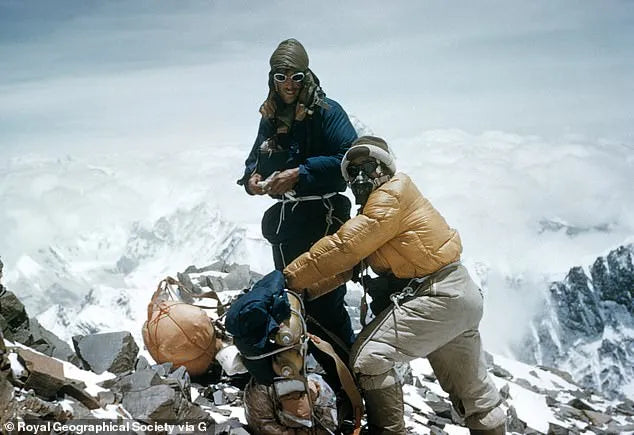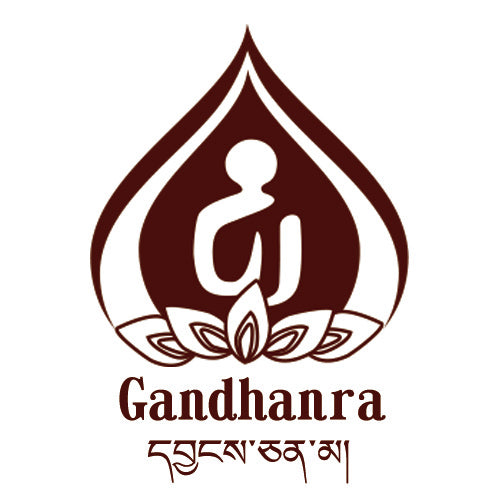
Tenzing Norgay, the first to summit Mount Everest, the child held above her head by the Mother of the Snow Mountains (I)

"I think they are true pioneers and explorers, paving the way for the unknown. It is because of the two of them and their team that we are able to do so much today," said Jamling Tenzing Norgay proudly to reporters.

Fifteen Minutes of World-Famous
Buddhism is the traditional religion of the Sherpa and Tibetan people. As devout Buddhists, when Norbu made it to the summit of Mount Everest, he left a gift at the top – chocolate bars, biscuits, and candies. His companion Hillary buried a cross that had been given to him by a teammate. They found a suitable spot in the snow and indulged in some cake.
Tenzing Norgay describes the scene:
… In every direction around us, there were magnificent Himalayan peaks. For the closer peaks like Lhotse, Nuptse, and Makalu, you had to look downwards now to see their peaks. And in the further distance, mountain ranges from all over the earth, even Kangchenjunga itself, seemed just small protrusions under the vast sky.

For many years, no one knew who reached the summit first, between Tenzing Norgay and Sir Edmund Hillary. They always just lightly said, "We reached the summit together."

Hillary later wrote: "I turned around to look at Tenzing. Even under his oxygen mask, with icicles hanging from his hair, I could see his infectious smile. I reached out my hand, and we shook hands. But that wasn't enough for Tenzing, he impulsively put his arm around my shoulder, and we patted each other on the back, congratulating each other."
They only stayed at the summit for about 15 minutes. Hillary took the iconic photo of Tenzing holding his ice ax. It is said that, as Tenzing had never used a camera before, Hillary's moment of triumph was regretfully not captured. However, according to Tenzing's autobiography, when Tenzing offered to take a photo of Hillary, she declined.
"I waved at Hillary, telling her I wanted to take a photo of her now. But for some reason, she shook her head, she did not want to."

The child of Mount Everest
There are various conflicting claims about the birthplace of Tenzing Norgay. In his autobiography, he claimed to be a Sherpa from the Khumbu region at the southern foot of the Himalayas. However, in a 1985 interview with an Indian radio station, he stated that his parents were from Tibet. According to many later accounts, including his son Jamling Tenzing Norgay, he was born in Tibet and raised in the Kama Valley at the southern foothills.
Although no one remembers his exact date of birth, he determined it to be around late May based on his mother's vague recollections of the weather and crops. After summiting Mount Everest on May 29, 1953, he decided to celebrate his birthday on that day.


His parents are honest Tibetan yak herders, and his father passed away early on. But fortunately, his mother lived to see her son summit Mount Everest. Norgay's birth may have been ordinary, but there were also lucky omens. When he was born, his mother was on a pilgrimage to a place called Ghang Lha.

He grew up in a village near Mount Everest, at an altitude of about 4200 meters.
As a member of a nomadic family, he often herded yaks on the pastures hundreds of meters above the village as a child. He also once crossed the Nangpa La pass in a caravan, which is a pass at an altitude of 5700 meters near the western foot of Mount Everest. So, from the very beginning, he lived in a place very close to Mount Everest.


Kathmandu in the last century, 1901
©Digital Archaeology Foundation
Adventurer's Mountain Climbing Dream
At that time, the southern foothills of Mount Everest were off-limits to foreigners, meaning that all attempts to climb Mt. Everest had to be made from the northern side. Starting from 1921, British climbers utilized the help of Sherpa people, who were heavily concentrated in the region of Darjeeling, to assist them in reaching Mount Everest and attempting to climb it.

Norgay climbing route, 1954
©National Geographic
Norbu used to work for a Sherpa family in his childhood. He always had a feeling that he would not spend his whole life herding yaks in the mountains. So, at the age of 13, he started to venture alone to the big city of Kathmandu.
It can be said that Norbu was a born adventurer, full of a strong spirit of adventure from a young age. At that time, most Sherpa people were not willing to take adventurous climbs except for their livelihood, but Norbu was inspired by the passion of foreign climbers. Unlike most Sherpas at the time who only wanted to be porters on Mount Everest, he wanted to be a mountaineer.


As for why Tenzing was so drawn to climbing Everest from a young age, there are two explanations that he himself recounted after his monumental achievement.
After descending from the mountain, he mentioned that as a child, monks in the village monastery had told him that the deities and spirits resided on the slopes of Mount Everest, prompting his desire to pilgrimage there. He also stated that after hearing stories of expedition teams from older Sherpas, he dreamt of conquering Mount Everest himself.

The first map of Mount Everest, 1933,
The first ascent by Norgay and others was 20 years later
© National Geographic
The porter and his wife.
In nearly twenty years, he participated in every expedition attempting to reach the summit of Mount Everest, but it seemed like an unattainable goal for them. Because Mount Everest pierces through two-thirds of the Earth's atmosphere, approximately the cruising altitude of modern jet aircraft. Therefore, the oxygen content there is very low, the temperature is also extremely low, and the weather is unpredictable.
With this goal in mind, he participated in climbing activities for a long time as a regular porter, and in every climbing team he joined, he was always a respected member. He accompanied many confident expeditions attempting to summit, but without exception, they all failed.

©National Geographic
Dargeeling, the Sherpa people, and Mount Everest formed a triangle that defined Tenzing Norgay's life. Dargeeling is a small town with a population of 120,000, but in the 1950s, it only had 25,000 residents. It sits on a steep slope at an altitude of 2000 meters on the southern foothills of the Himalayas.

1912, ©wikipedia
Tenzing's home is a small room in a pink stucco house situated on a high street in Darjeeling - on clear days, you can see the stunning views of the northwest snow peaks, including the world's third highest peak, Kangchenjunga. To see Mount Everest, one must go to a lookout point called Tiger Hill, located 13 miles southeast of the city.

1890, ©wikipedia

To be continued


